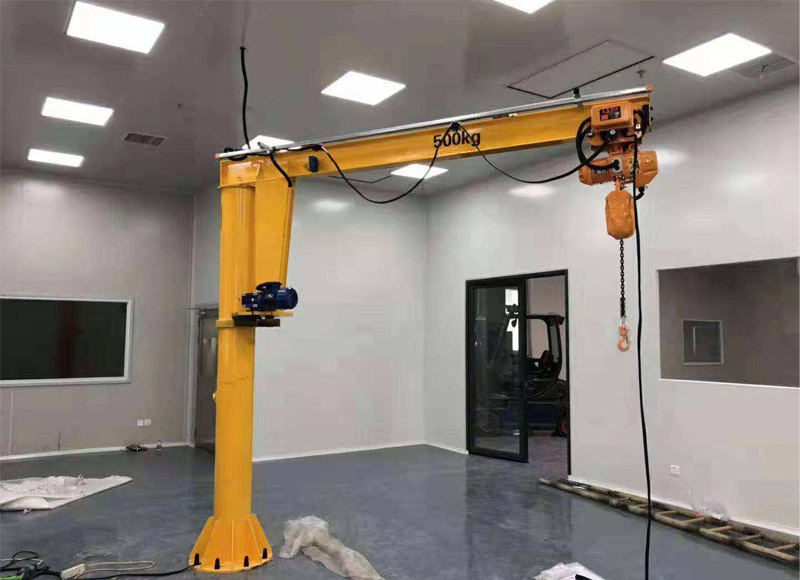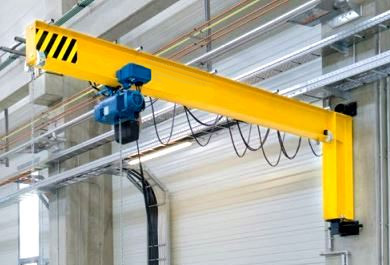What Should be Paid Attention to When Installing Jib Crane?
A jib crane is a lifting equipment with a rotating function. It is usually installed on walls, floors or other fixed structures. Through the cooperation of rotating arms and telescopic mechanisms, materials can be transported in different directions and at different heights. Jib cranes have the advantages of compact structure, small footprint, and flexible operation. They are suitable for places with limited space such as workshops and warehouses.

Composition structure
● Base: It is the fixed part of the jib crane, which is installed on fixed structures such as walls and columns through bolts or other fasteners. The base needs to have sufficient strength and stability to ensure the safe operation of the crane.
● Slewing arm: It is the core part of the slewing jib crane and realizes the rotation function through bearings and driving devices. The length and angle of the rotating arm can be adjusted according to actual needs to meet the needs of different working scenarios.
● Telescopic mechanism: Usually installed at the end of the rotating arm, the telescopic function is achieved through a telescopic cylinder or cylinder. The telescopic mechanism can expand the crane's operating range and improve the flexibility of material handling.
● Lifting hoist: It is the actuator of the jib crane and is used to realize the lifting operation of materials. The selection of the lifting hoist should be determined based on the actual lifting capacity and working environment to ensure the safe operation of the crane.
Things to note when installing jib cranes
1. Before installation, a comprehensive inspection of the crane should be carried out to ensure that all components are intact and meet the installation requirements.
2. When installing, ensure that the base is firmly fixed to prevent the crane from shaking or falling off during operation.
3. The installation of the rotating arm and telescopic mechanism should comply with the design requirements to ensure normal rotation and telescopic functions.
4. The installation of the lifting hoist should ensure that the lifting height, lifting capacity and other parameters meet the actual needs, and reasonable limit devices should be set to prevent overloading or overtravel.
5. After the installation is completed, a comprehensive trial run should be carried out to check the operation of each component of the crane to ensure safety and reliability.

Scenes to be used
● On the workshop production line, materials can be quickly transported between different processes to improve production efficiency.
● In the warehouse, it can help achieve rapid access and classification management of goods and improve warehousing efficiency.
● In the maintenance workshop, it can be used to hoist and carry heavy equipment or parts to facilitate maintenance personnel.
● In the terminal loading and unloading area, it can assist in the rapid loading, unloading and transshipment of goods and improve the operating efficiency of the terminal.
